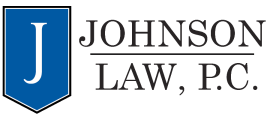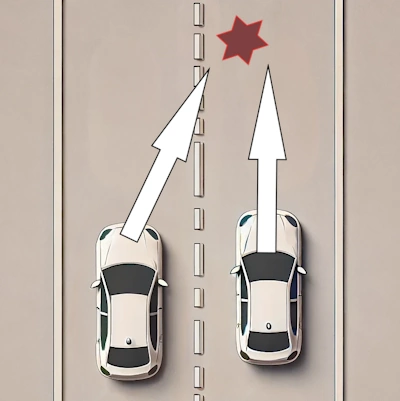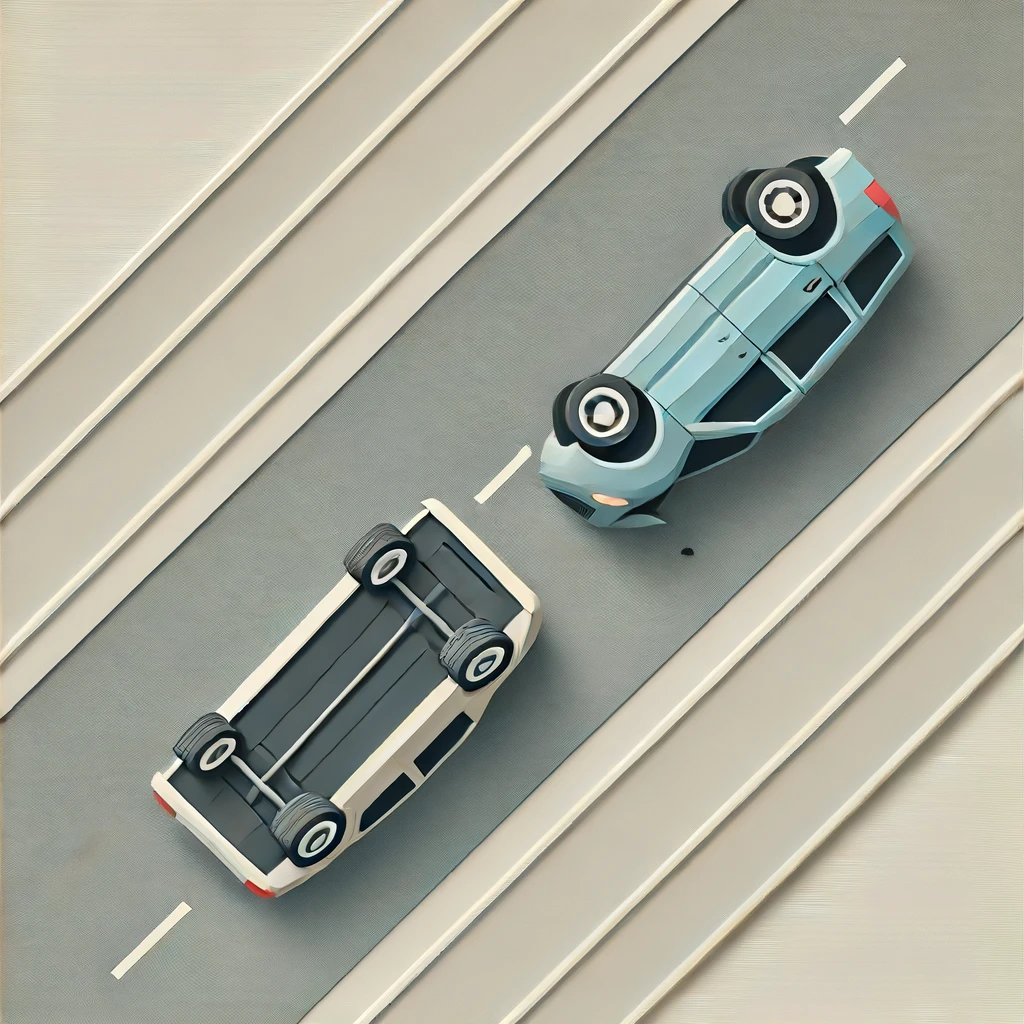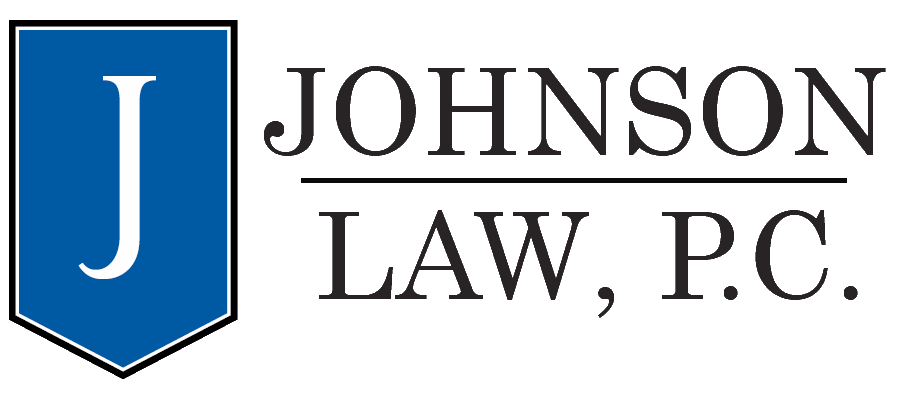Types of Car Accidents and Typical Injuries
If you were injured in a car accident and need immediate medical help contact emergency services. If you need immediate legal help contact us now or read our post-accident guide here. In this post, we will go over different types of car accidents and the typical injuries and liability considerations.
At Johnson Law, we recognize the stress and uncertainty that follow a car accident. This page aims to outline your immediate legal options and the types of claims that can be pursued, helping you understand why legal representation is crucial. Our experienced attorneys are here to help you secure the compensation you need to recover, emphasizing our commitment to your rights and well-being.
What is a head-on collision?
What types of injuries should I be worried about?
Who is a fault in a head-on collision?
These are questions we are happy to answer for you. You can call us (971-205-3266) for a free consultation or continue reading. Please note, that this blog post only aims to discuss two-vehicle collisions. More information can be found on each collision type in additional blog posts or on our practice area pages.
Injured in a Head-On Collision
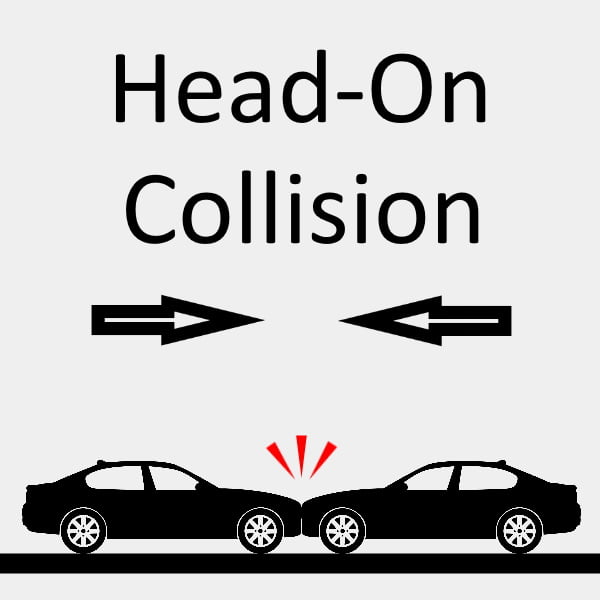
What is a Head-On Collision?
A head-on collision, also known as a frontal crash, occurs when the front ends of two vehicles collide while traveling in opposite directions. This type of accident is particularly dangerous due to the combined speed and force of the impact, often resulting in severe injuries or fatalities. Head-on collisions are more likely to occur on undivided highways, rural roads, or when a driver mistakenly travels the wrong way on a one-way street.
Determining Fault in a Head-On Collision
Fault in head-on collisions generally lies with the driver who was traveling in the wrong direction. However, establishing fault can be complex and involves various factors:
- Wrong-Way Driving: Often a primary cause, where a driver enters a roadway against the flow of traffic.
- Road Conditions and Signage: Poor or unclear signage and inadequate road maintenance can contribute to wrong-way driving incidents.
- Driver Impairment: Alcohol, drugs, or fatigue can impair judgment and lead to driving in the wrong direction.
- Weather Conditions: Fog, heavy rain, or snow can reduce visibility, increasing the likelihood of such accidents.
A thorough investigation by legal professionals can help pinpoint the exact cause and determine liability.
Potential Compensation for a Head-On Collision
Compensation for head-on collision victims can vary widely based on the specifics of each case, but it often includes:
- Medical Expenses: Covering immediate emergency care, surgeries, hospitalization, rehabilitation, and long-term medical needs.
- Lost Wages: Compensation for time off work due to injuries and any potential loss of earning capacity.
- Pain and Suffering: Damages for physical pain, emotional distress, and reduced quality of life.
- Property Damage: Costs associated with repairing or replacing the damaged vehicle.
Given the serious nature of these accidents, the compensation amounts can be significant, reflecting the extensive impact on the victim's life.
Common Injuries in Head-On Collisions
Injuries from head-on collisions are often severe and can include:
- Fractured Bones: Legs, arms, and ribs are commonly affected due to the direct impact.
- Traumatic Brain Injuries (TBI): Caused by the violent motion and impact, ranging from concussions to severe brain damage.
- Spinal Cord Injuries: The significant force exerted can lead to paralysis or other long-term disabilities.
- Internal Injuries: Crushed organs and internal bleeding are common and require immediate medical intervention.
- Facial and Skull Injuries: Injuries to the face and skull from impact with the steering wheel, dashboard, or airbag.
These injuries often necessitate extensive and prolonged medical treatment, significantly impacting the victim's life.
Additional Head-On Collision Information
Head-on collisions are distinguished by the high effective collision speed, known as the change in velocity (ΔV). The combined speeds of two vehicles traveling in opposite directions result in a much higher impact force, leading to more catastrophic injuries and extensive vehicle damage. This type of collision is often investigated with advanced techniques in accident reconstruction to accurately determine the sequence of events and contributing factors.
Understanding the unique dangers and implications of head-on collisions can help victims and their families better navigate the aftermath. Seeking legal assistance is crucial in ensuring that all aspects of the accident are thoroughly examined and that victims receive the compensation they deserve.
By focusing on the specifics of head-on collisions, including the nature of the accident, fault determination, potential compensation, and common injuries, we aim to provide comprehensive information to those affected by such incidents.
Injured in a Rear-End Collision
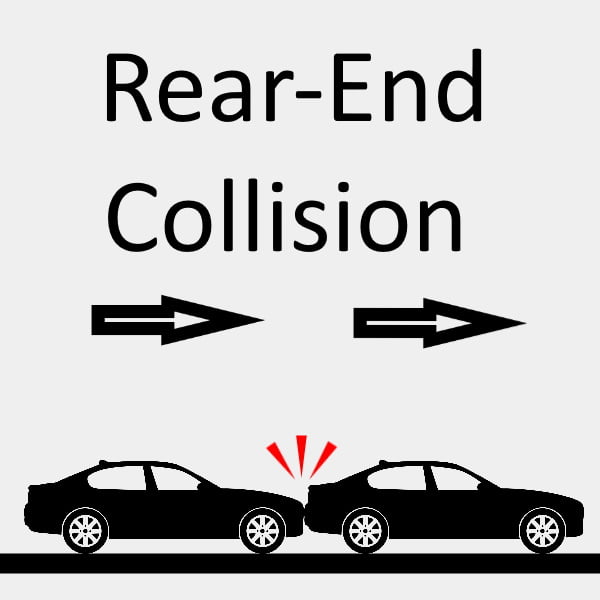
What is a Rear-End Collision?
A rear-end collision occurs when the front of one vehicle strikes the rear of another vehicle, with both vehicles typically traveling in the same direction. This is one of the most common types of car accidents, often happening at intersections, in heavy traffic, or on highways. Despite sometimes occurring at lower speeds, rear-end collisions can cause significant damage and injuries.
Determining Fault in a Rear-End Collision
In most rear-end collisions, the driver of the rear vehicle is presumed to be at fault. However, fault determination can involve various factors, such as:
- Driver Distraction: Texting, phone calls, or other distractions leading to delayed reaction times.
- Following Too Closely: Failing to maintain a safe distance between vehicles.
- Sudden Stops: The lead vehicle making an abrupt stop without warning.
- Road Conditions: Wet, icy, or poorly maintained roads contributing to the accident.
Each accident is unique, and our attorneys can help analyze the specifics to establish clear liability.
Potential Compensation for a Rear-End Collision
Compensation for rear-end collisions can cover a range of damages, including:
- Medical Expenses: Immediate treatment, surgeries, rehabilitation, and ongoing medical care.
- Lost Wages: Compensation for time off work and loss of earning capacity due to injuries.
- Pain and Suffering: Damages for physical pain, emotional distress, and impact on quality of life.
- Property Damage: Costs for repairing or replacing the damaged vehicle.
Our experienced legal team can help determine the appropriate compensation based on the details of your case.
Common Injuries in Rear-End Collisions
Injuries from rear-end collisions often include:
- Whiplash: A common neck injury caused by the sudden jolt of the head.
- Back Injuries: Including herniated discs, muscle strains, and spinal cord damage.
- Joint Injuries: Affecting shoulders, hips, and knees due to the impact.
- Traumatic Brain Injuries (TBI): Resulting from the forceful movement of the head, causing concussions or more severe brain damage.
Proper medical evaluation and treatment are essential, as these injuries can have long-term effects.
Additional Information
Rear-end collisions are characterized by the relative speeds and masses of the vehicles involved. While they often occur at lower speeds, the impact force can still cause significant injuries. Factors such as the weight of the vehicles, speed at the time of collision, and the angle of impact all play a role in the severity of the crash.
Understanding the dynamics of rear-end collisions helps victims and their families better navigate the aftermath. Seeking legal assistance is crucial to ensure a thorough investigation and to secure appropriate compensation for the damages suffered.
By focusing on the specific details and complexities of rear-end collisions, this information aims to provide clear and helpful guidance to those affected by such incidents.
Injured in a Broad-Side Collision (T-Bone)
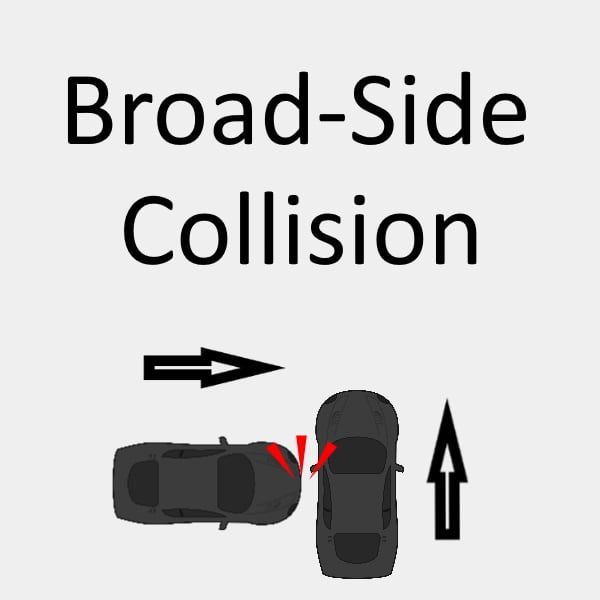
What is a Broad-Side or T-Bone Collision?
A broadside collision, also known as a T-bone collision, occurs when the front of one vehicle strikes the side of another vehicle, with the vehicles typically traveling in perpendicular directions. This forms a “T” shape, giving the collision its name. These accidents often occur at intersections where one vehicle fails to yield the right of way.
Determining Fault in a Broad-Side Collision
Fault in a T-bone collision is usually determined by traffic control laws and right-of-way rules. Common factors include:
- Failure to Yield: One vehicle not adhering to traffic signals or signs.
- Running Red Lights or Stop Signs: A frequent cause of broadside collisions.
- Distracted Driving: Not paying attention to traffic control devices.
- Speeding: Reducing the ability to stop in time at intersections.
Our attorneys can help investigate the specifics of your accident to determine liability based on Oregon’s traffic control device laws.
Potential Compensation for a Broad-Side Collision
Compensation for broadside collisions can include:
- Medical Expenses: Covering immediate treatment, surgeries, rehabilitation, and long-term care.
- Lost Wages: Compensation for time off work and loss of future earning capacity.
- Pain and Suffering: Damages for physical pain, emotional distress, and diminished quality of life.
- Property Damage: Costs for repairing or replacing the damaged vehicle.
The impact of the crash on your life and long-term health can significantly affect potential payouts. Our legal team can help assess and maximize your compensation.
Common Injuries in Broad-Side Collisions
Injuries from broadside collisions can be severe and are influenced by factors such as vehicle size disparity, occupant location, and crash speed. Common injuries include:
- Traumatic Brain Injury (TBI): Caused by the sudden impact and possible head trauma.
- Shoulder and Hip Joint Damage: From the force of the collision.
- Bone Fractures: Common in the arms, legs, and ribs.
- Spinal Cord Injuries: Potentially leading to paralysis or long-term disabilities.
These injuries often require extensive medical treatment and can have lasting effects on your quality of life.
Additional Information
Broadside collisions can also lead to vehicle rollovers, particularly if there is a significant size disparity between the vehicles or if the collision occurs at high speeds. The likelihood of a rollover and the severity of the damage depend on several factors:
- Vehicle Type: Convertibles and smaller cars fare worse in rollovers compared to SUVs and trucks with roll cages.
- Terrain: The location of the crash can influence the extent of damage, with hilly or uneven terrain increasing the risk of rollovers and additional injuries.
Understanding the dynamics and risks of broadside collisions can help victims and their families navigate the aftermath more effectively. Legal assistance is crucial to ensure a thorough investigation and to secure appropriate compensation for the injuries and damages suffered.
By focusing on the specific details and complexities of broadside collisions, this information aims to provide clear and helpful guidance to those affected by such incidents.
Injured in a Sideswipe Collision?
What is a Sideswipe Collision?
A sideswipe collision occurs when the sides of two vehicles traveling in the same or opposite directions come into contact. These accidents commonly happen during lane changes, merging, or when a driver veers out of their lane. Sideswipe collisions can vary in severity, from minor scrapes to significant impacts that cause secondary collisions.
Determining Fault in a Sideswipe Collision
Fault in sideswipe collisions usually lies with the driver who fails to maintain their lane or check blind spots. Contributing factors can include:
- Improper Lane Changes: Switching lanes without signaling or ensuring the lane is clear.
- Distracted Driving: Activities such as texting, using a phone, or other distractions.
- Failure to Yield: Not giving the right of way during merging or lane changes.
- Road Conditions: Narrow lanes, road debris, or weather conditions causing sudden maneuvers.
Our legal team can help investigate the specifics of your accident to determine clear liability.
Potential Compensation for a Sideswipe Collision
Compensation for sideswipe collisions can cover a variety of damages, including:
- Medical Expenses: Immediate and long-term medical treatment, including hospital stays, surgeries, and rehabilitation.
- Lost Wages: Compensation for time off work and any future loss of earning capacity.
- Pain and Suffering: Damages for physical pain, emotional distress, and the overall impact on your quality of life.
- Property Damage: Costs for repairing or replacing the damaged vehicle.
Each case is unique, and our attorneys can help determine the appropriate compensation based on your specific circumstances.
Common Injuries in Sideswipe Collisions
Injuries from sideswipe collisions can include:
- Whiplash: Caused by sudden lateral movements.
- Scrapes and Bruises: From the impact and potential secondary collisions.
- Fractures: Resulting from the collision's force, particularly in the arms and legs.
- Head Injuries: If the head strikes the side window, door, or other parts of the vehicle.
Proper medical evaluation and treatment are essential, as these injuries can have long-term effects.
Additional Information
Sideswipe collisions often occur at high speeds on highways, increasing the potential for severe damage and injuries. Even at lower speeds, the impact can be significant due to the unexpected nature of these accidents. Factors such as the size and speed of the vehicles, as well as the angle of impact, play crucial roles in determining the severity of the collision.
Understanding the dynamics of sideswipe collisions and seeking legal assistance can help ensure a thorough investigation and appropriate compensation for the damages suffered.
injured in a car accident? - We Can Help
Johnson Law has experienced personal injury attorneys covering all the types of accidents listed above. Tell us your story and get the compensation you rightly deserve. Consultations are free and only a phone call away. Get in contact with an attorney immediately or schedule a time that works best for you.
Injured in a Multi-Vehicle Pileup?
What is a Multi-Vehicle Pileup?
A multi-vehicle pileup involves three or more vehicles colliding, typically on highways or busy roads. These accidents often occur due to sudden stops, poor visibility, or adverse weather conditions, leading to a chain reaction of collisions. Multi-vehicle pileups can result in extensive damage and injuries due to the number of vehicles involved and the potential for secondary impacts.
Determining Fault in a Multi-Vehicle Pileup
Fault in multi-vehicle pileups can be complex and often involve multiple parties. Contributing factors include:
- Chain Reactions: One initial collision causing subsequent crashes.
- Poor Visibility: Fog, heavy rain, or snow reduces visibility and reaction times.
- Speeding and Tailgating: Drivers not maintaining safe distances and driving too fast for conditions.
- Distracted Driving: Not paying attention to the road and other vehicles.
Determining liability in these scenarios requires thorough investigation and analysis. Our attorneys can help navigate these complexities to establish fault accurately.
Potential Compensation for a Multi-Vehicle Pileup
Compensation for multi-vehicle pileup victims can include:
- Medical Expenses: Comprehensive medical care for multiple injuries, including emergency treatment, surgeries, and rehabilitation.
- Lost Wages: Compensation for time off work and potential long-term disability.
- Pain and Suffering: Damages for extensive physical pain, emotional distress, and impact on quality of life.
- Property Damage: Significant repair or replacement costs for multiple vehicles involved.
Given the complexity and severity of these accidents, securing appropriate compensation requires experienced legal assistance.
Common Injuries in Multi-Vehicle Pileups
Injuries from multi-vehicle pileups can be severe and varied, often including:
- Multiple Fractures: From repeated impacts and crush injuries.
- Head and Neck Injuries: Due to violent forces and secondary collisions.
- Internal Injuries: Such as organ damage and internal bleeding from severe impacts.
- Burns: If vehicles catch fire during the pileup, leading to serious burn injuries.
Proper medical evaluation and treatment are crucial, as these injuries can have lasting effects on victims' lives.
Additional Information
Multi-vehicle pileups are particularly dangerous due to the high potential for secondary impacts and the involvement of numerous vehicles. These accidents often require coordinated emergency response efforts and can result in road closures and significant traffic disruptions. The dynamics of such accidents are influenced by the number of vehicles, their speeds, and the specific conditions at the time of the crash.
Understanding the complexities of multi-vehicle pileups and seeking legal assistance can help ensure a thorough investigation and appropriate compensation for the damages suffered.
Injured in a Rollover Accident?
What is a Rollover Accident?
A rollover accident occurs when a vehicle flips onto its side or roof. These accidents are particularly dangerous and often involve vehicles with a high center of gravity, such as SUVs, trucks, and vans. Rollovers can happen due to sharp turns, overcorrection, collisions, or even when a vehicle trips over an object or uneven terrain.
Determining Fault in a Rollover Accident
Fault in rollover accidents can be influenced by several factors, including:
- Driver Behavior: Speeding, aggressive driving, or overcorrection leading to loss of control.
- Vehicle Defects: Issues with vehicle design, such as a high center of gravity or poor stability.
- Road Conditions: Poorly maintained roads, sharp curves, or unexpected obstacles.
- External Factors: Weather conditions, such as ice or rain, contributing to loss of control.
Our legal team can conduct a thorough investigation to determine the precise cause and establish liability.
Potential Compensation for a Rollover Accident
Compensation for rollover accident victims can be substantial, covering:
- Medical Expenses: Emergency treatment, surgeries, hospitalization, rehabilitation, and long-term care.
- Lost Wages: Compensation for time off work and potential long-term disability.
- Pain and Suffering: Damages for significant physical pain, emotional trauma, and reduced quality of life.
- Property Damage: Costs for repairing or replacing the vehicle, often substantial in rollover accidents.
Our attorneys can help evaluate your case and pursue the maximum compensation you deserve.
Common Injuries in Rollover Accidents
Injuries from rollover accidents are often severe and can include:
- Head and Neck Injuries: Due to the violent motion and potential roof crush.
- Spinal Cord Injuries: Resulting from significant force on the spine, potentially leading to paralysis.
- Broken Bones: Common in high-impact rollovers, affecting arms, legs, and ribs.
- Internal Injuries: Caused by the intense force exerted on the body, leading to organ damage and internal bleeding.
These injuries often require extensive medical treatment and can have long-term effects on victims' lives.
Additional Information
Rollover accidents are particularly hazardous due to the potential for severe injuries and fatalities. The likelihood of a rollover and the severity of the damage depend on factors such as:
- Vehicle Type: Vehicles with a high center of gravity, such as SUVs and trucks, are more prone to rollovers.
- Speed and Maneuvering: High speeds and sharp turns increase the risk of rollover.
- Terrain: Uneven terrain, steep slopes, or tripping hazards can trigger a rollover.
Rollover accidents often necessitate a detailed investigation to understand the contributing factors and determine liability. Understanding these dynamics and seeking legal assistance is crucial to ensuring a thorough investigation and securing appropriate compensation.
We will review your case for free.
Pay us nothing unless we get you a better settlement.
We work on contingency.
